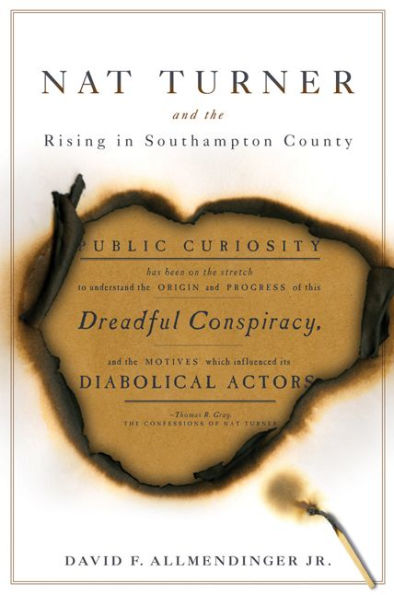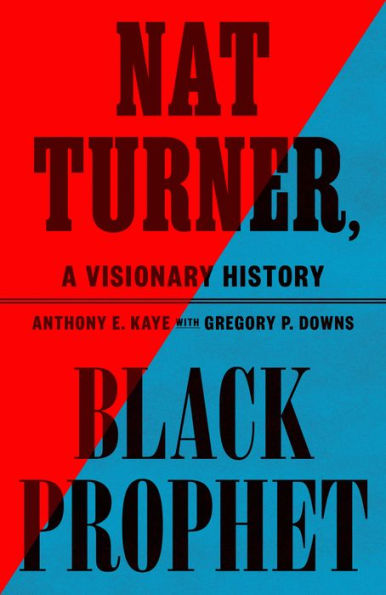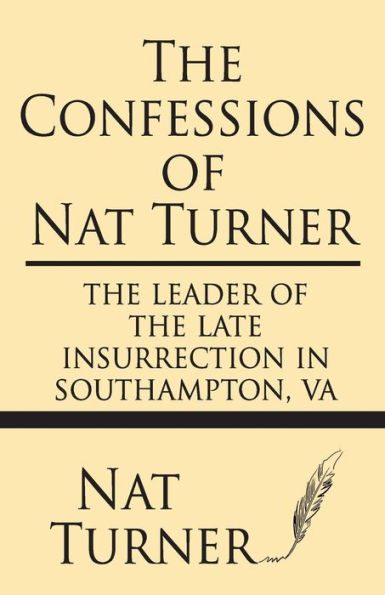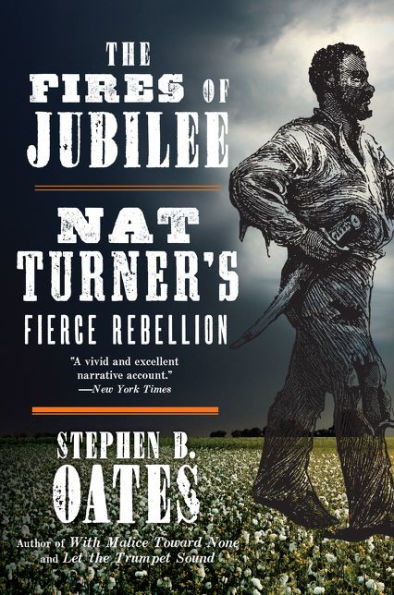Home
Nat Turner and the Rising Southampton County
Barnes and Noble
Loading Inventory...
Nat Turner and the Rising Southampton County
Current price: $52.00

Barnes and Noble
Nat Turner and the Rising Southampton County
Current price: $52.00
Loading Inventory...
Size: Hardcover
*Product information may vary - to confirm product availability, pricing, shipping and return information please contact Barnes and Noble
A masterful study of one of the bloodiest slave rebellions in the history of the Old South.
In August 1831, in Southampton County, Virginia, Nat Turner led a bloody uprising that took the lives of some fifty-five white people—men, women, and children—shocking the South. Nearly as many black people, all told, perished in the rebellion and its aftermath.
Nat Turner and the Rising in Southampton County
presents important new evidence about the violence and the community in which it took place, shedding light on the insurgents and victims and reinterpreting the most important account of that event,
The Confessions of Nat Turner
. Drawing upon largely untapped sources, David F. Allmendinger Jr. reconstructs the lives of key individuals who were drawn into the uprising and shows how the history of certain white families and their slaves—reaching back into the eighteenth century—shaped the course of the rebellion.
Never before has anyone so patiently examined the extensive private and public sources relating to Southampton as does Allmendinger in this remarkable work. He argues that the plan of rebellion originated in the mind of a single individual, Nat Turner, who concluded between 1822 and 1826 that his own masters intended to continue holding slaves into the next generation. Turner specifically chose to attack households to which he and his followers had connections. The book also offers a close analysis of his
Confessions
and the influence of Thomas R. Gray, who wrote down the original text in November 1831. The author draws new conclusions about Turner and Gray, their different motives, the authenticity of the confession, and the introduction of terror as a tactic, both in the rebellion and in its most revealing document.
Students of slavery, the Old South, and African American history will find in
an outstanding example of painstaking research and imaginative family and community history.
In August 1831, in Southampton County, Virginia, Nat Turner led a bloody uprising that took the lives of some fifty-five white people—men, women, and children—shocking the South. Nearly as many black people, all told, perished in the rebellion and its aftermath.
Nat Turner and the Rising in Southampton County
presents important new evidence about the violence and the community in which it took place, shedding light on the insurgents and victims and reinterpreting the most important account of that event,
The Confessions of Nat Turner
. Drawing upon largely untapped sources, David F. Allmendinger Jr. reconstructs the lives of key individuals who were drawn into the uprising and shows how the history of certain white families and their slaves—reaching back into the eighteenth century—shaped the course of the rebellion.
Never before has anyone so patiently examined the extensive private and public sources relating to Southampton as does Allmendinger in this remarkable work. He argues that the plan of rebellion originated in the mind of a single individual, Nat Turner, who concluded between 1822 and 1826 that his own masters intended to continue holding slaves into the next generation. Turner specifically chose to attack households to which he and his followers had connections. The book also offers a close analysis of his
Confessions
and the influence of Thomas R. Gray, who wrote down the original text in November 1831. The author draws new conclusions about Turner and Gray, their different motives, the authenticity of the confession, and the introduction of terror as a tactic, both in the rebellion and in its most revealing document.
Students of slavery, the Old South, and African American history will find in
an outstanding example of painstaking research and imaginative family and community history.
A masterful study of one of the bloodiest slave rebellions in the history of the Old South.
In August 1831, in Southampton County, Virginia, Nat Turner led a bloody uprising that took the lives of some fifty-five white people—men, women, and children—shocking the South. Nearly as many black people, all told, perished in the rebellion and its aftermath.
Nat Turner and the Rising in Southampton County
presents important new evidence about the violence and the community in which it took place, shedding light on the insurgents and victims and reinterpreting the most important account of that event,
The Confessions of Nat Turner
. Drawing upon largely untapped sources, David F. Allmendinger Jr. reconstructs the lives of key individuals who were drawn into the uprising and shows how the history of certain white families and their slaves—reaching back into the eighteenth century—shaped the course of the rebellion.
Never before has anyone so patiently examined the extensive private and public sources relating to Southampton as does Allmendinger in this remarkable work. He argues that the plan of rebellion originated in the mind of a single individual, Nat Turner, who concluded between 1822 and 1826 that his own masters intended to continue holding slaves into the next generation. Turner specifically chose to attack households to which he and his followers had connections. The book also offers a close analysis of his
Confessions
and the influence of Thomas R. Gray, who wrote down the original text in November 1831. The author draws new conclusions about Turner and Gray, their different motives, the authenticity of the confession, and the introduction of terror as a tactic, both in the rebellion and in its most revealing document.
Students of slavery, the Old South, and African American history will find in
an outstanding example of painstaking research and imaginative family and community history.
In August 1831, in Southampton County, Virginia, Nat Turner led a bloody uprising that took the lives of some fifty-five white people—men, women, and children—shocking the South. Nearly as many black people, all told, perished in the rebellion and its aftermath.
Nat Turner and the Rising in Southampton County
presents important new evidence about the violence and the community in which it took place, shedding light on the insurgents and victims and reinterpreting the most important account of that event,
The Confessions of Nat Turner
. Drawing upon largely untapped sources, David F. Allmendinger Jr. reconstructs the lives of key individuals who were drawn into the uprising and shows how the history of certain white families and their slaves—reaching back into the eighteenth century—shaped the course of the rebellion.
Never before has anyone so patiently examined the extensive private and public sources relating to Southampton as does Allmendinger in this remarkable work. He argues that the plan of rebellion originated in the mind of a single individual, Nat Turner, who concluded between 1822 and 1826 that his own masters intended to continue holding slaves into the next generation. Turner specifically chose to attack households to which he and his followers had connections. The book also offers a close analysis of his
Confessions
and the influence of Thomas R. Gray, who wrote down the original text in November 1831. The author draws new conclusions about Turner and Gray, their different motives, the authenticity of the confession, and the introduction of terror as a tactic, both in the rebellion and in its most revealing document.
Students of slavery, the Old South, and African American history will find in
an outstanding example of painstaking research and imaginative family and community history.

















